Exploring the energy options
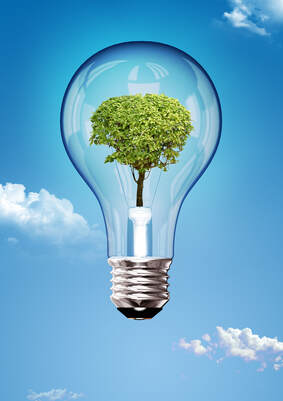
Part of making an sustainable building is making it self-sustaining in energy provision or at least try to approach self-sufficiency. To become energy independent, different strategies can be applied. First and for all energy needs to be harvested. Besides this, energy consumption will be reduced en energy needs to be stored. Overall, less energy will be consumed and energy can be transferred in time from periods with high availability to periods with low availability.
Energy harvesting
Different options and ideas to make a building sustainable in terms of energy.
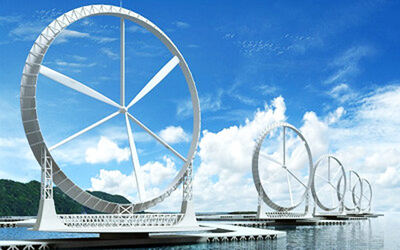
To structure all possible ways energy can be harvested to use in the advantage of the building, an overview is created. At the one hand, energy can be converted inside the building from primary energy to a more usable form or to electricity. On the other hand, energy can be harvested outside the building. Most obvious examples of the latter are harvesting solar and wind energy.
In house energy conversion can take different forms. A developed example is fermenting waste water, which produces gas that can be used in a gas-fired generator. Also food and garden waste can be used in a similar process. These methods are conventional and mostly used to produce electricity. When widening the scope beyond electricity production, other options become available. As nature shows, light can be directly generated from proteins. Fire-flies and Jellyfish make use of the chemical process needed.
External energy harvesting is mainly about harvesting solar and wind energy. For both forms of energy, developed technologies exist to harvest the energy and convert it to electricity. Solar panels and wind turbines exist for many years now. A newer technology to produce electricity is a vibro-wind turbines. Besides the production of electricity, energy can be collected using the greenhouse principle. The heat obtained can then be used for direct heating or for the production of electricity as in concentrated solar power.
Saving on heating and cooling.

Ideal temperatures are fundamental in the workplace. Savings need to be made in the direction of building thermal isolation and integration inside the environment.
Ideal temperatures are fundamental in the workplace. Savings need to be made in the direction of building thermal isolation and integration inside the environment.
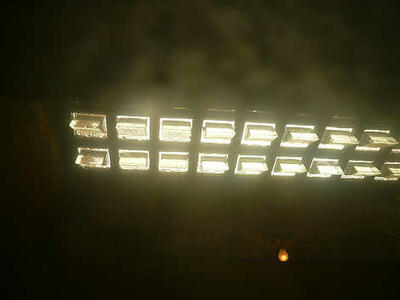
Thermal stability of one building is fundamental for creating an optimal environment for the people working in it.
Since heating and cooling procedures imply high levels of energy consumed, and given that it’s not advisable to vary the temperature ranges inside the building, solutions for smart isolation and ventilation need to be implemented.
A basic principle would be that of using insulating material that prevent heat dispersion.
Panels to control optimal ventilation of the building could be implemented: during summer they should be able to deliver air streams through and around the building in order to cool it, while during winter cold air fluxes should be blocked.
If the building is compact, heat retention will be successful, but light will have a hard time in reaching all the corners and rooms. Therefore, a more scattered structure could be a good compromise: since the building was also meant to be linked to nature, plants outside windows and on terraces would also be natural barriers/isolators.
Saving energy on light

It is obvious nowadays that we need light in our buildings. In a faculty building light is needed in classrooms, conferences aulas, libraries, etc. In order to produce light we need energy, and this energy comes from electrical companies. What light concerns, a lot of savings can be made in a building when using the availability of a big power source: the sun.
It is obvious nowadays that we need light in our buildings. In a faculty building light is needed in classrooms, conferences aulas, libraries, etc. In order to produce light we need energy, and this energy comes from electrical companies. What light concerns, a lot of savings can be made in a building when using the availability of a big power source: the sun.
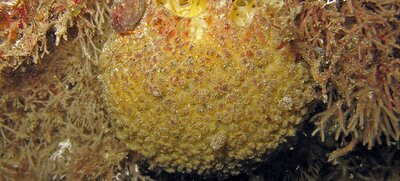
Finding a solution to reduce energy used to generate light can be split up in two different main themes. The first one is to profit as much as we can from the sun light available during the day. As we mentioned before the sun is the most powerful source we can rely on. So the building need to have a optimal shape conforming the path that the sun realizes in a day. This way we won’t need a lot of extra energy for lighting the building. The more surface we expose to the sun, the more light we will receive and less energy will be needed. To complement the light spread into the faculty, some biological examples led us to think about the possibility to transport light through the building. The basic principle is taken from the silica spicules of sponges. This silica spicules have the ability to transport the light taken directly from the sun and transporting it into the inner parts of the sponge by structurally arranging individual spicules in bundles. If we were able to integrate this principle in the building or some parts of the building we would be able to have a higher luminosity in parts of the faculty that sun light doesn’t reach.
Another problem arrives when the sun goes down and no more natural lightning is available. What we would need is a source to generate light in a way that we do not use electricity. As in the case of the sponge we found an example in nature that can help the building reduce its energy need. The objective now is to understand the principle and try to make a possible adaptation of the manner in which fireflies produces light. This light is produced by a process of oxidation of luciferin in the presence of the enzyme luciferase, which occurs very quickly. Then we have to see if there is some way to introduce this principle to our project.
Energy storage
First Ideas

About the storage of energy, we were thinking about learning some things about the animals which don't keep their body temperature constant. The nature has selectionned this kind of properties because it is really economic in terms of energy. These animals use the heat from outside to warm up, and when there is not enough heat, they reduce activities in the parts of their body which are not as vitals as the others, and they slow their cardiac rhythm.
We could inspire from this strategy, and absorb as much energy as we can when it is available, and give it back when it is needed. The whole problem is to know how to store some energy, because we know that storing it as electricity is complicated, so we need to find other ways to store energy. Until now we had three ideas:
Convert the energy from wind or sun into potential energy, by pumping up as many water as we can as high as possible and transform it into electricity when energy is needed
Heating water balloons with heat from the sun, and use this hot water in the heating systems
Using materials for walls which absorb a maximum ammount of heat.
These three points need now to be deepened and presented to the water/shelter teams to improve them and to cross the specific needs of the different projects.
Indepth analysis of the different energy options

The following articles contain some basic calculations to demonstrate the viability of some ideas. Besides this, an indications is made of how the different aspects fit in the entire building.
Quantifying the energy need
The amount of energy needed is quantified to obtain a starting point for design calculations

The amount of energy needed is calculated to quantify some of the energy solutions. To do this, an estimation is made of the number of students in the building. To keep things simple, it is estimated that the study will take five years and each year 200 students will start a study in bio-engineering. Therefore 1000 students will be in the building each day.
A difference is made between the amount of energy needed as electricity and energy needed as heat. The primary objective is to generate electricity, the reason is twofold. First, the amount of electricity needed is much bigger than the amount of heat. Second, heat can be obtained as a byproduct of the electricity generation.
The calculations are based on data from a research 'CO2-footprint TUDelft'. This research provide energy measurements for a period of one year, for a university of approximately 13.000 students. A conversion factor of 8,3 kWh/Nm³ is chosen to convert the gas consumption to heat consumption. Besides this, an efficiency of 40% is estimated as the efficiency of the thermal powered generator situated on the site of TUDelft.
To conclude, there will be an energy need of 20 MWh of electricity per day and 800 kWh of heat per day for the whole building. In addition it is estimated that the peak use of electricity during the day will be 1,5 MW.
Heating thanks to Earth and Water.

Geothermic energy: hot water from the soil to heat the building through radiating panels below the floor.
Geothermic energy: hot water from the soil to heat the building through radiating panels below the floor.
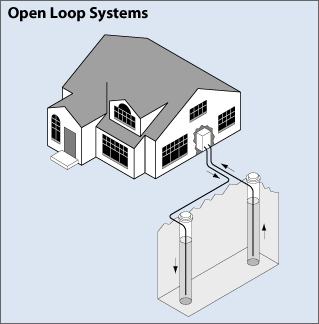
Considering the need of green sources of energy and the importance of water inside The Building, the idea of exploiting a geothermal heating system came straightforward.
In particular, according to Netherland geographical features, the decision of using a system of open loop heat pumps seemed the most appropriate. Open loop systems differ from closed ones as the water doesn’t keep circulating in a closed circuit of pipes, but it’s continuously exchanged with a water reservoir present underneath the ground.
OPEN LOOP HEAT PUMPS -> EXCHANGE OF WATER WITH A RESERVOIR
The soil needs to be studied in order to perform this water exchange not to impoverish it; moreover, the depth needs to be calibrated for obvious reasons. Finally, open loops geothermal systems are “practical only where there is an adequate supply of relatively clean water, and all local codes and regulations regarding groundwater discharge are met” (energy.gov).
This system looks suited for Netherland, since saline water is abundant below the ground. From the data shown by the Water Group, the depth at which water is found, i.e. piezometric level, is almost zero in Delft.
Geothermal heat pumps have a high Coefficient of Performance, meaning that they give back more energy than the electrical one they were given: depending on the season and therefore on ground temperature, they give from 3 to 5 times the energy put in input.
1 UNIT OF ELECTRICITY -> 3 TO 5 UNIT OF HEAT <--> 10 TO 16 °C EARTH TEMPERATURE
Heat pumps are however not too suited for providing electrical energy: transforming heat energy back to electric, only a 30% efficiency is obtained; the gain would be then close to zero considering the energy already given for its functioning.
Need for precise calculations arise for spatial organization of the pumps themselves and of their engines which will be placed above the ground.
Wind turbines as electrical energy source

For the research of other ways to obtain energy from a nature the wind is also a very powerful source to produce electrical energy. That makes interesting to analyse how is it possible to profit this strong energy and transform it to the energy needed. The most common machine used is the wind power plant. It is a device that converts kinetic energy from the wind into mechanical energy.
For the research of other ways to obtain energy from a nature the wind is also a very powerful source to produce electrical energy. That makes interesting to analyse how is it possible to profit this strong energy and transform it to the energy needed. The most common machine used is the wind power plant. It is a device that converts kinetic energy from the wind into mechanical energy.
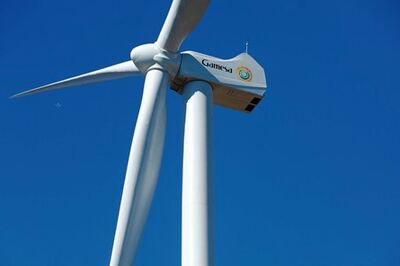
As it has been calculated, for a faculty building is required approximately 1.500 KW. The efficiency of wind turbines are very low with small diameters, and as we need much more energy to cover the electrical part of the faculty building that would not work. So, to cover the power required it is normal to use a wind turbine which size is going to be approximately 80 meters high. But to install a wind power plant in the middle of the university is not feasible for aesthetic and structure reasons, the only way to put them close to the building would be small ones but as just mentioned would not work. Then the final solution adapted could be place strategically the wind turbine in a place were the wind is high to obtain as much energy as possible but at the same time not very far from the building.
Another problem that made us build the wind power plant to a safer place and not on the top of the structure was the vibrations that the station would generate to the faculty building. As the structure will receive a lot of power of the wind there is an incredible energy absorbed and then trasmitted to the ground, where the building will be placed. But as it is mentioned before placing the wind turbine far from the faculty and then transporting the electrical energy would be a good solution.
Otherwise, a storage building will be required due to the high quantity of energy produced by the station. There are some periods that no wind will flow and energy stored will provide the building electricity required to carry out the current activities completely normal.
Energy Storage II

Here are the first conclusions about energy storage we arrived to, after three days, we will use them in the final presentation
Here are the first conclusions about energy storage we arrived to, after three days, we will use them in the final presentation
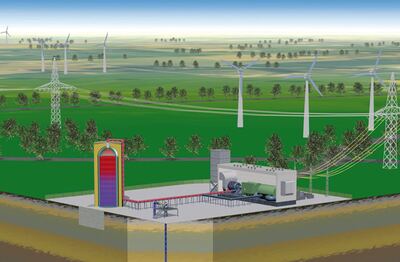
Yesterday we had three ideas we wanted to develop in order to cover the needs of energy of the building. Today we searched for figures of consumption and we eliminated some ideas and find others. Since most of our energy will be weather-dependent (wind + sun), we need to have big capacities of storage, in theory the equivalent of two weeks without energy input (very bad weather without wind). So the capacity we need is in theory almost 300 MWh.
At this stage, the ways to store energy which seem feasible are the two following:
ADELE Project : CAES (Compressed Air Energy Storage) → big plant, high capacity (can store 1000 Mwh/day and feed 300 MW for several hours), actually too high for our needs (20 Mwh/day, 1,5 MW during the highest demands) so we thought about connecting on a regional project, which doesn't exist yet.
Using extra-energy to make electrolysis of water, storing H2 somewhere and using fuel cells to produce electricity during low-production times. The problem is that H2 is not dense at all (90g/m^3) so we need either to compress it at really high pressure (→ energy consumption) or enormous volumes (a rapid calculation of the volume needed to store 30 Mwh gives about 10000 m^3).
We abandonned the idea of pumping up some water. To cover the needs of the building for one day, we would have needed to pump 80000 m^3 of water on 10 m.
YUTPA analysis of the energy project

This YUTPA analysis tries to uncover the framework of the interaction between students and the energy they use. To do so, every different aspect, Relation, Place, Action and Time, is discussed.
This YUTPA analysis tries to uncover the framework of the interaction between students and the energy they use. To do so, every different aspect, Relation, Place, Action and Time, is discussed.

The most important aspect of the interaction between student and electricity is time. Since almost everyone uses energy most of the time, the engagement is permanent. Also the rhythm is important, since everyone wants the energy immediately when they need it. Energy enables moments that signify, but it doesn't create those moment. Therefore the last point is less important.
As a close runner-up is the place. Especially the environmental impact of energy is of utter most important since it has an impact on the other aspects of human life. Energy in the form of heat is also important as it influences our overall body sense. This again has an impact on the other aspects of our life. The emotional space is less present in the interaction.
Third aspect is of the framework is relation. At this point in time, our interaction with energy itself is of minor importance. However the awareness of the impact of energy itself grows. This way the reputation, engagement an communion become more essential in the relation between energy and students.
The last aspect in the list is action. Although energy is very critical in our daily life as it enables us to do other activities, the action with energy itself is less important. Negotiation, for example, is almost non existing. Also the quality of the deeds is of minor importance as people expect the energy to be always of an acceptable quality.
Energy Project : Connection to Life's Principles

In this article, we expose the connections between our choices for the energy and the basics principles of life
In this article, we expose the connections between our choices for the energy and the basics principles of life
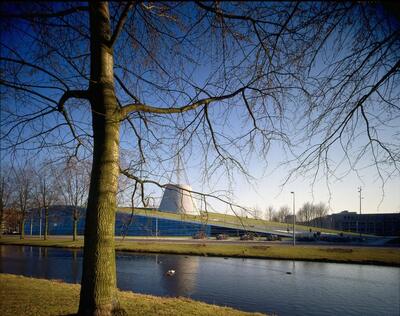
While we were working on our project, we tried to respect as much as possible the life's principles.
The main benefit of our project is that it is completely resource efficient, since it is almost energetically independent. We designed a solution which is multi-functional in order to adapte to climate changes, and we thought about backup plan, to prepare to really bad weather conditions. The fact that we have a real diversity in the sources of energy used, like life would do, gives our system a resilience a building with one only energy source wouldn't have.
The processes we use are environmental-friendly since wind-turbines and geothermal heat production are CO2 free.
The solution we propose is locally attuned, since we use energy sources which are and will always be available in a sufficient quantity. Furthermore our solution is a mix of different energy sources, which implies that different persons with different backgrounds cooperate in order to provide the correct amount of energy at any time. This implies too that our system is well-regulated and rapidly adaptable to switch from a source of energy to another when the climate imposes it.

 Giacomo,
Giacomo,
 Cerqueda Codina,
Cerqueda Codina,





